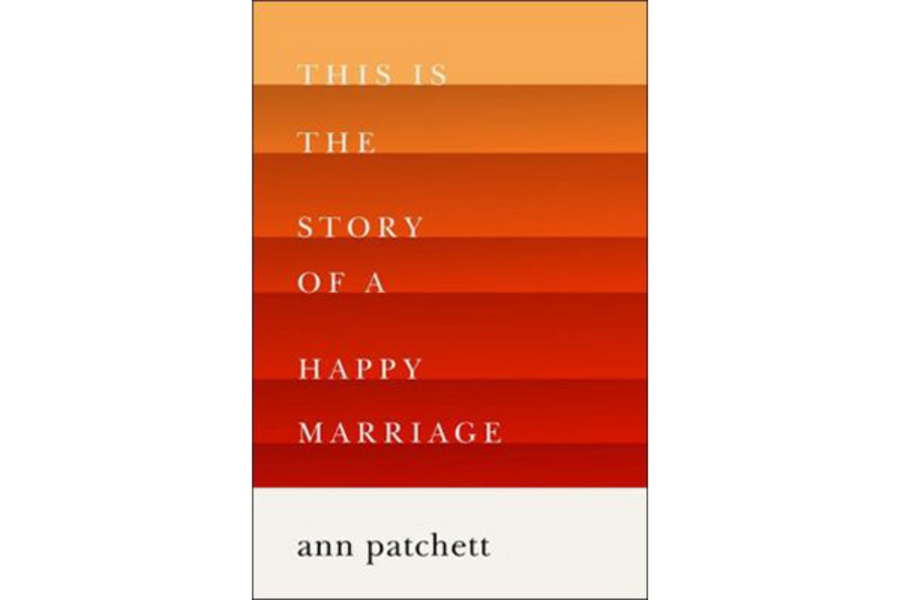This Is the Story of a Happy Marriage
Loading...
Ann Patchett has one thing in common with the Grinch: She can’t stand Christmas.
“In my family, there were happy Thanksgivings and tolerable Easters, but Christmas was a holiday we failed at with real vigor,” she writes on the first page of her new essay collection,This Is the Story of a Happy Marriage. That Patchett is not convinced Dec. 25 is the most wonderful time of the year is the first of many tidbits she shares with readers, writing with humor and candor about everything from her time as a waitress at a T.G.I. Friday’s to the summer she and a friend rolled in – and ate – poison ivy to escape from sleepaway camp. (Why they thought a hospital would be a better alternative is unclear, she says now.)
Patchett, the author of “Bel Canto” and “State of Wonder,” is probably best known as the most famous independent bookstore owner in America. She writes about opening Parnassus, a former tanning place located near a doughnut shop and a nail salon, in Nashville after the city lost its bookstores. (“I wanted to go into retail about as much as I wanted to go into the army,” she writes.)
By the end of this wide-ranging collection of excellent essays, most of which have been previously published elsewhere, readers will know more about Patchett than they do their neighbors.
Among other topics, she writes about finding (and later losing) her beloved dog; the creation of her first novel, “The Patron Saint of Liars”; her first marriage and her flight from it; her friendship with the late writer Lucy Grealy, the subject of her memoir “Truth and Beauty”; and the years she spent looking after her grandmother.
In the title essay, she also writes about the 11 years of back-and-forthing it took for her to decide to marry her current husband. The clincher included a frantic flight in a blizzard to get to Minnesota before he underwent heart surgery – which sounds like the most terrifying plane ride it is possible for a person to walk away from whole. “I was in a single seat, and in the single seat behind me was a father who was loudly and continually threatening his two sons across the aisle. The two sons, who were maybe ten and twelve, were beating each other, smacking and pinching and screaming like a couple of wolverines strapped into adjacent seats,” Patchett writes. “Between the father and the sons, it was the worst behavior I have ever seen on a plane. Then, suddenly, all three of them stopped. That’s how bad the flight was. We were pitching sideways through the snow, plummeting, climbing, and in the same instant they each put their hands in their laps and did not make another sound.”
The title essay is terrific, but it’s only the second-best in the collection. The best is “The Wall,” as in when Patchett learned to climb six-feet ones in order to pass the entrance exam to the Los Angeles Police Academy. Patchett didn’t want to become a police officer, she explains, she wanted to find a way to honor her father after the Rodney King riots. Her dad was a Los Angeles police officer who arrested some of the most famous killers in America. “He made the connection between the Tate and the LaBianca murders, and went into the desert for Charles Manson. He picked up Sirhan Sirhan the night Bobby Kennedy was shot,” she writes.
So she studied up on the entrance exam and learned to run and do arm hangs and fling herself over walls, she explains in this expanded piece, which originally ran in The Washington Post Magazine. She also passed the exam. “For a brief time I saw how difficult it would be to a be a police officer in the city of Los Angeles, how easy it would be to fail at the job, as so many have failed. My father succeeded. He served his city well. I wanted to make note of that.”
Not all of the essays strike as deep. Some are just plain funny, as in “My Road to Hell Was Paved,” in which Patchett rents an RV to write for a travel magazine – and discovers to her amused horror, that she likes it. “For all of my bone-deep distrust of motor homes, they do combine two of my favorite pastimes: driving and napping.”
If there can be said to be a clunker in the bunch, it’s probably “Do Not Disturb,” in which Patchett checks into the Chateau Marmont in Los Angeles to write. Much better is “The Getaway Car: A Practical Memoir About Writing and Life,” in which Patchett suggests the secret is to keep stacking up pages until they amount to something. “Why is it that we understand playing the cello will require work, but we attribute writing to the magic of inspiration?” she asks with a certain asperity.
Patchett has always been a working writer, she explains in the introduction, whether that’s meant writing for Seventeen and Bridal magazine or later, The New York Times Magazine and Gourmet. (She did turn down one assignment that would have “necessitated authorial nudity in a natural hot spring.”) As a result, she’s refreshingly un-precious about her “craft” while still retaining her love of it.
“My short stories and novels have always filled my life with meaning, but, at least in the first decade of my career, they were no more capable of supporting me than my dog was,” she writes. “But part of what I love about both novels and dogs is that they are so beautifully oblivious to economic concerns.”








